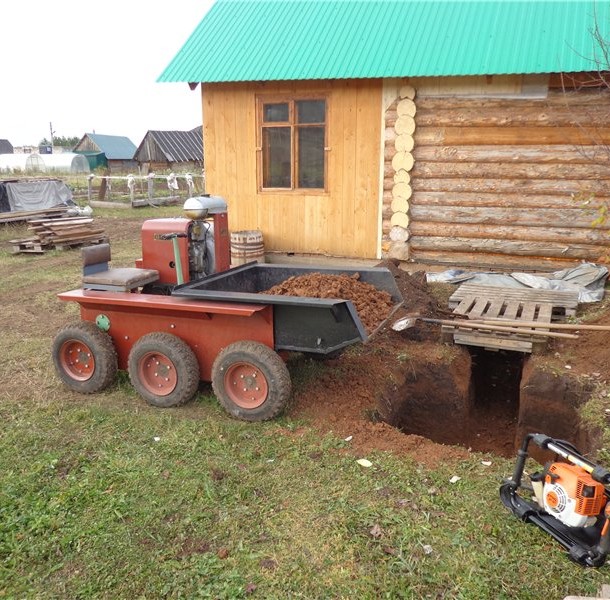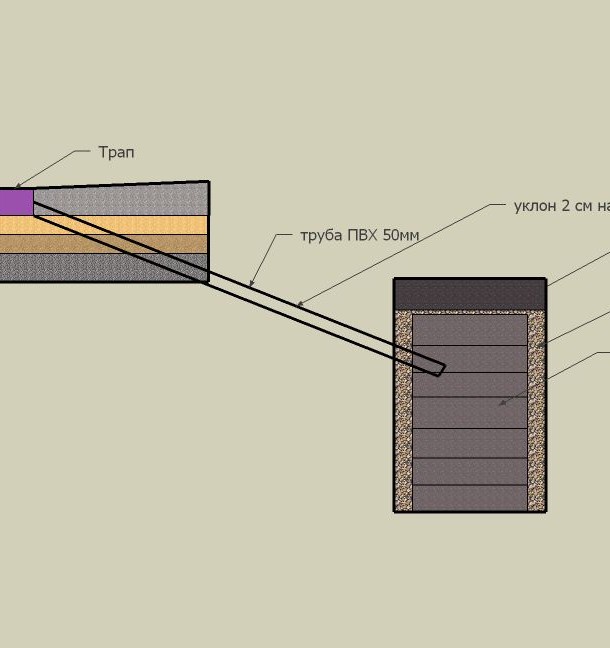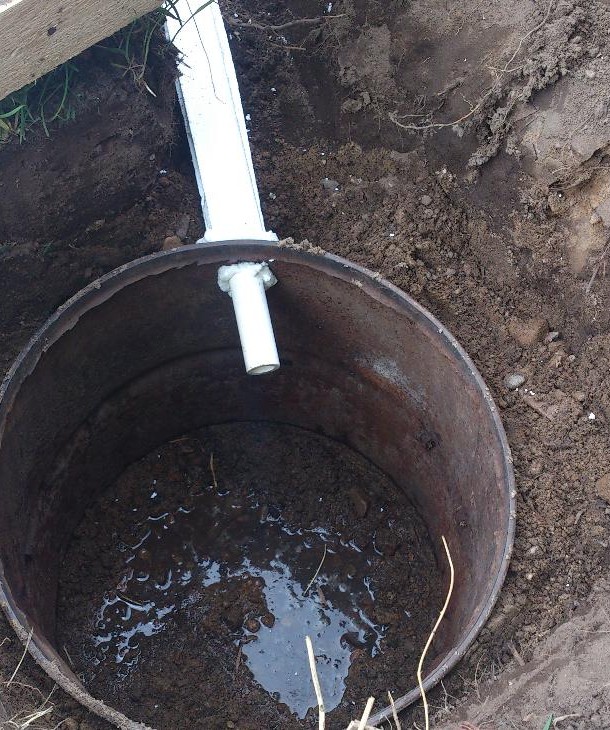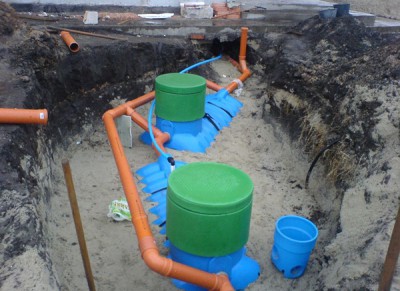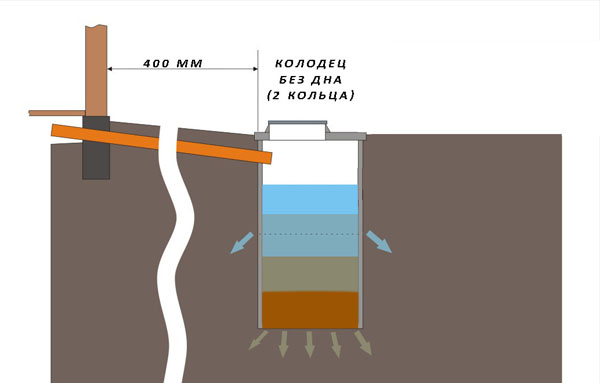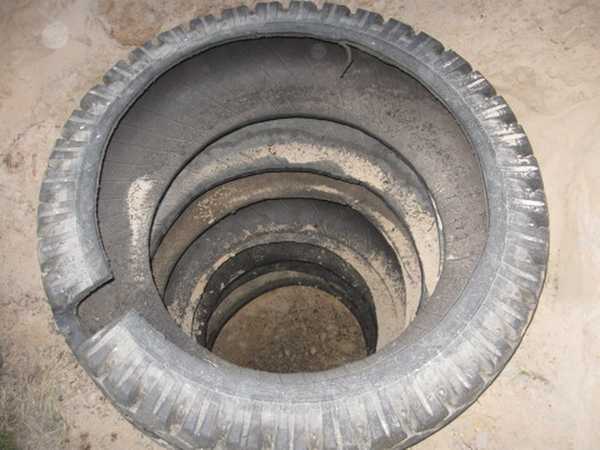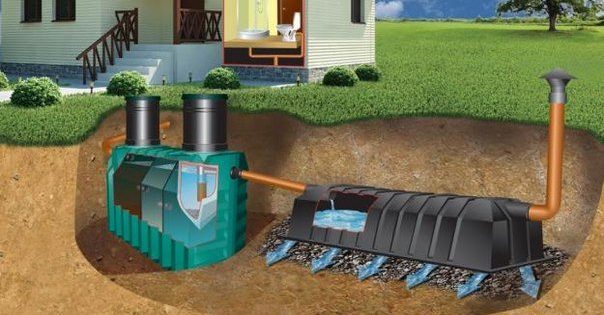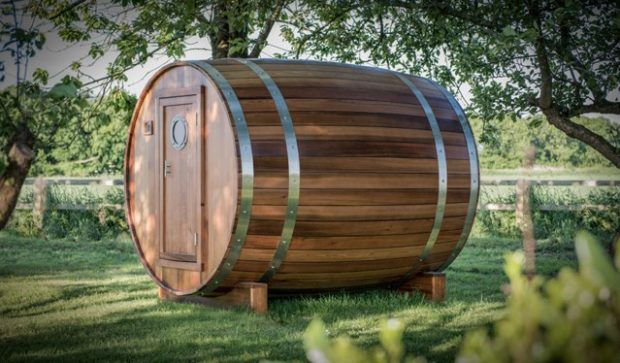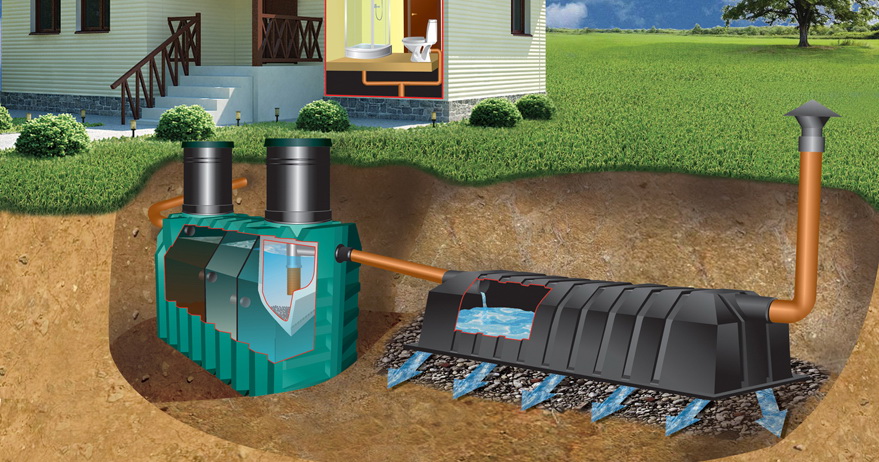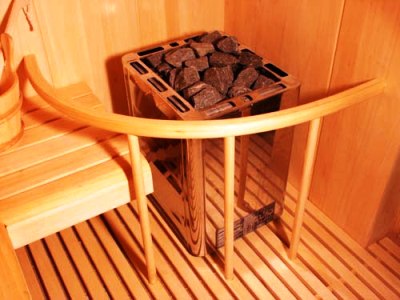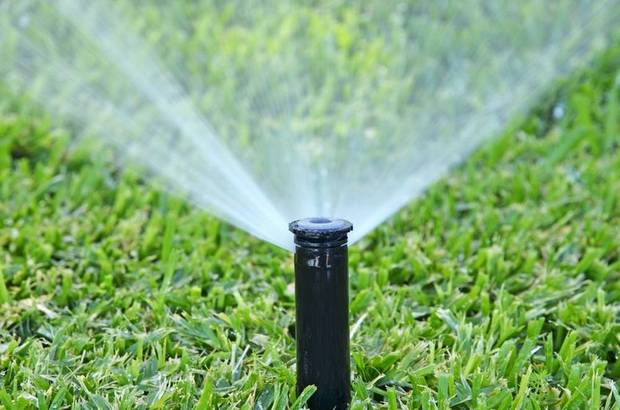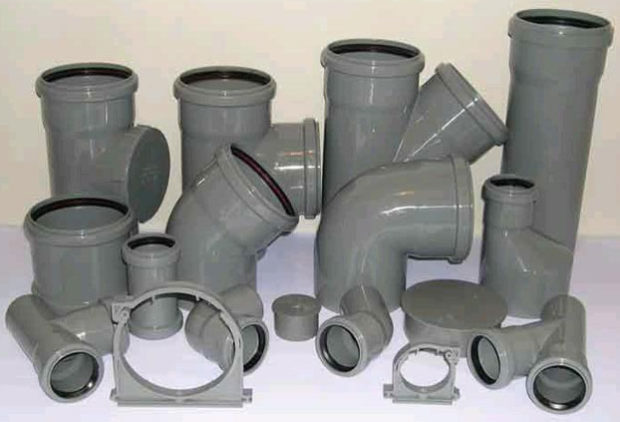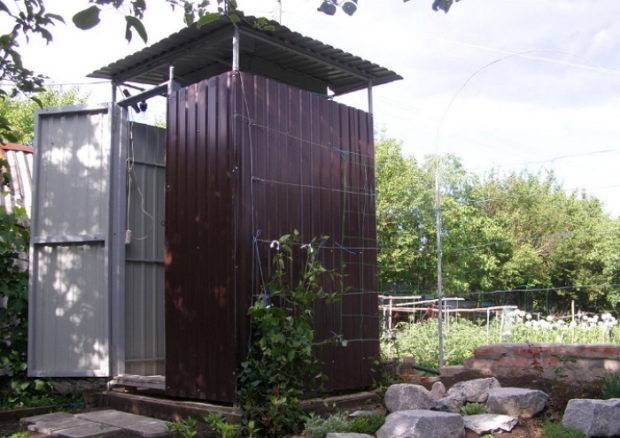How to properly drain the water from the bath - 5 ways
A bathhouse is a place often in contact with water. Moreover, this happens both outside and inside. AND protecting the wooden walls with a waterproof coating is not enough - it is necessary to organize a quality drain to avoid frequent repairs of the foundation, damage to the bath by a pathogenic fungus and rotting of wood.
Water is removed from the wash room directly to the drain tank or to a place designated for drain. The options for organizing the water intake system can vary quite depending on the conditions in which the bathhouse was built and the type of drain.
First you need to know the answers to several important questions regarding the construction conditions of the allotment:
- Where will the stock be located and what area should be allocated for it?
- What type of soil is on your site where the bath will be located?
- Is it possible to connect to a central sewer?
- What budget do you expect?
- Will you build a drain yourself or will you use hired labor?
From the proper organization of drain communications the longevity of the construction and the quality of the bath procedures themselves depend. Even if the volume of drains is small, you should not hope that the soil will absorb all the liquid: the remaining water will still spoil the foundation and the soil itself, which may cause the structure to shrink. The only case where the flow may not be necessary is if the bathhouse itself is used no more than once a month by a small number of people (2-3 people). Here you can use the so-called leaking floor, with widely laid boards. In all other cases, this is the first thing to plan after laying the foundation. Therefore, it is very useful to know the various ways of organizing the drain for the bath, even if you do not do it yourself, but order from a construction company.
Autonomous sewerage with a settling well
The first and most time-consuming method is a filter well-settler based on autonomous sewage. Here, the system consists of two tanks, preferably plastic. The first tank filters the effluents from coarse particles with a simple strainer, arranged in the tank. The second tank carries out the second degree of wastewater treatment before sending them to the sewage pit. But for any type of drain with sewage, a special floor design in the bath is needed.
The whole essence of this floor is to tilt to the center of the room at the initial stage of construction. A fitting is mounted in the center of the floor, which is adjacent to the connector in the floor, tightly treated with sealant around the installation site. The fitting funnel is selected within 5 cm, with slight deviations. Waste pipes from all rooms, if several, are connected by a splitter. But you should know that the construction of a cesspool is advisable only in case of deep occurrence of groundwater, at least 4-5 m deep. Otherwise, your pit will be flooded year-round and the smells of putrefactive bacteria from it will haunt until each subsequent cleaning. If the conditions for the sewage pit are favorable, then the second item in calculating the flow will be the determination of the volume of the pit according to several criteria: the number of people in the bath, the frequency of use and the cost of water.
Further, when the drain project is already ready, the location of the pit is calculated: it should be no further than 2 meters from the bath. If you place the drain too close, then there will be a chance of penetration leading into the foundation. If it is too far, then it will not be possible to make a sufficient slope for water to drain naturally.
When laying the foundation, you most likely have already become familiar with the type of soil on the site and its properties. When creating a drain pit it is important to understand the physical properties of the earth, since in view of this, concomitant measures will be taken to strengthen the skeleton of the pit. However, if the soil is not loose and does not crumble, then nothing will have to be strengthened. But an overly dense clay soil also has a drawback in the case of arranging a drain - it does not absorb well. Sometimes a good combination of a sufficiently dense soil with good absorbent properties comes across in areas. Then work with the pit will be limited to the fact that you just need to dig it and arrange the filtering according to one of the described methods. But such conditions are very infrequent. Most often, the soil crumbles and you have to resort to strengthening the borders of the pit. For strengthening, brickwork with gaps for absorbing water is often used, or wild stone (any waterproof material). The easiest option is to use a large plastic tank with many holes as the inner frame of the pit.
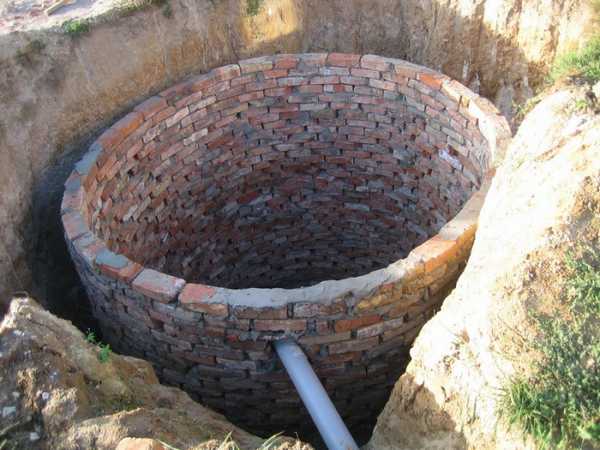 It is also important to choose the optimal size for the holes in the tank. The optimal form for the tank in this case is a streamlined cylindrical one, since it holds the pressure created by water in the best way. It is also necessary to provide the pit with a heavy ceiling from concrete or iron.
It is also important to choose the optimal size for the holes in the tank. The optimal form for the tank in this case is a streamlined cylindrical one, since it holds the pressure created by water in the best way. It is also necessary to provide the pit with a heavy ceiling from concrete or iron.
When the tank is ready, filter material (broken) is poured onto the bottom of the pit brick or crushed stone), and after it is covered with a layer sand. Sewage pipes, previously connected under one floor of the bathhouse, are diverted to the pit. Moreover, the optimal slope required for fast runoff varies within 1 cm per 1 meter of pipeline.
Arrangement of a simple drain pit
This way of organizing the flow is easier than the first by eliminating several stages of filtration. It implies all stages with organizing the runoff in the bathhouse itself and digging a hole, but in this case only a septic tank without filters will be used. The method is used if there is no desire to tinker with the replacement of filtration material and there is the possibility of using a cesspool machine for pumping wastewater.
But in this case, you should consider the approach to the pit at a distance of reach by the sleeve of the machine. The second way to clean a pit simplified system is to the use of special bacteria for the processing of rotting residues in a septic tank. Its effectiveness, of course, is many times lower than the complete removal of waste or natural filtration, but it also has a place to be.
The method of soil filtration
In this method, the main one is organization pipe systemsthrough which the liquid will be led to the sewer. The system will be distributed over the entire area of the site so that the water has time to go through several stages of filtration before the drain.
Filtration is carried out according to the drainage principle: the first step is to install a grate (in the initial section) for catching large waste on the pipe. Then, in the future, water flows through the pipe section covered with large filtering material. The last stage is a fine filter, that is, coarse sand.
Thus, the water from the effluents will be filtered throughout the site at the same time. creating an additional source of irrigationI. This method is suitable only in case of low occurrence of groundwater, since the location of the pipes should be more than 0.5 meters above the water level.
Drain pipe method
In general, this method is similar to the previous ones and differs only in the type of materials and small differences in the design of the septic tank. The longer pipe length is important here.. At the same time, it is important to mount the pipe itself at the stage of pouring the foundation with a slope towards the area for the construction of the sump.
The sump is based on concrete ringsthat make up the walls of the pit. The bottom, in turn, should not overlap for better absorption of the waste. The pipe is laid without corners and bends, and the diameter of the pipe is taken as much as possible among the sewer pipes for domestic wastewater. When installing the pipe, it is important to insulate it, since when freezing the soil water in the pipe may freeze and deform the plastic, at best.
Horizontal Filter Pill Method
This method is only suitable for a seasonal bath, in which the water consumption is so small that it simply makes no sense to make a sump. It consists in the following: at a distance of 2-3 meters from the foundation of the bath, a trench is excavated long and 1 m deep, no more than 50 cm wide.
Drainage material is placed at the bottom of the trench (crushed stone, broken brick, expanded clay or slag from the combustion of coal), is poured on top of a small layer of sand. After the drain pipe is laid to the bottom, allotted from the bath. The pit will be designed for a small amount of waste., not more than 100 liters. Therefore, you should think carefully before choosing this option.
Basic tips for creating a drain for a bath
In the event that there is at least some opportunity to connect your drainage system to the central sewage system, then this is the most optimal and most effective option for organizing wastewater. If the site is located in the wrong place for this, then you have to thoroughly study the features of the soil, the slope of the site, internal communications, the availability and level of groundwater, correctly calculate the materials and energy costs. Often the owners of the bath are faced with a choice, a septic tank or a well? Both options have their pros and cons. To equip a well, for example, it will take more time than to install a septic tank. But the right well provides the best filtration of water and virtually eliminates the appearance of unpleasant odors. The septic tank is more suitable for frequent use of the bath, as it provides faster absorption of water. In financial terms, the organization of a septic tank and a well almost do not differ. Everything will depend on the materials used., because you can always replace, for example, an expensive plastic container with old tiresarranging them in such a way that they constitute a cylindrical tank.
The gutter, which was described in the last, fifth method, is permissible only in the case of a small volume of water and the absence of cultivated plants on the site. Otherwise, they will simply be poisoned by detergents coming from the effluent, even though the water will pass through some filtration. Nonetheless, This is the cheapest and fastest option for organizing a drain.
In general, despite the apparent ease in fulfilling the task of organizing the discharge, not so easy to calculate all communications correctly. Therefore, if you do not have experience in construction, it is better to hire a team of builders - today this service is not too expensive.

